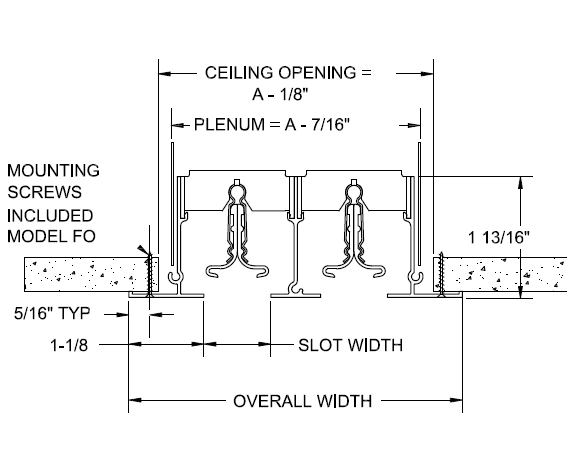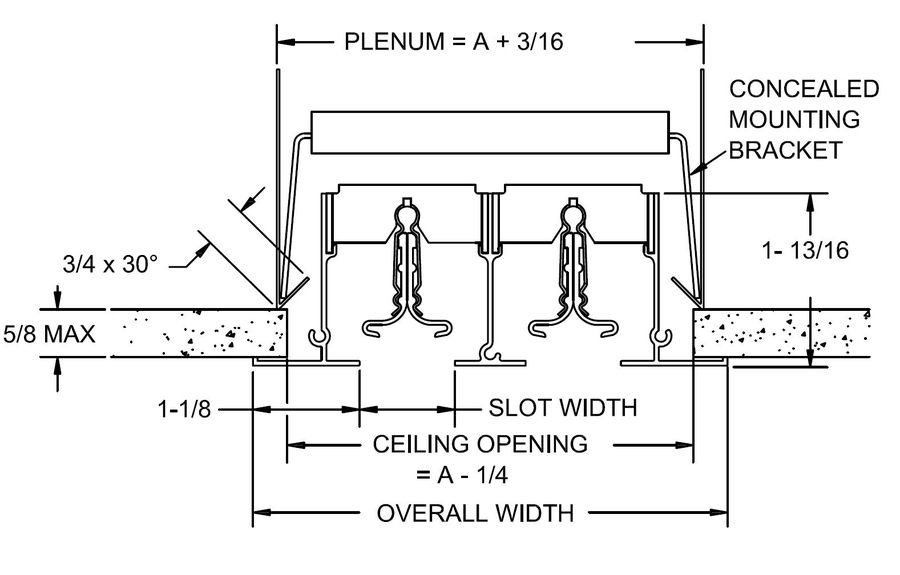Linear Slot Diffuser Installation

Heating, ventilation, and air conditioning (HVAC) systems supply heated and cooled air to different areas of a home or building. Each room requires a supply and return vent, or grill, to distribute air from HVAC ducts into the space, then collect exhaust air and transfer it outdoors. A linear diffuser serves as an effective alternative to traditional supply and exhaust vents, and may also improve the appearance of the room in some applications.


Installation in panelled ceilings Installation in conti nuous ceilings 03/2017 – DE/en Slot diffusers for ceiling installation Type VSD15 Slot diffusers with 15 mm diffuser face (nominal width) and adjustable air control elements Nominal lengths from 600 to 1500 mm, 1 slot Volume flow rate range from 7 to 30 (l/s)/m or 25 to 108 (m³/h)/m.

The average linear diffuser consists of a long, narrow metal casing with a series of louvers or grills along once face. Installers fasten the linear diffuser into a ceiling, wall, or window sill area so that the louvered face sits flush with the surrounding surface. Linear diffusers work with both drywall structures and drop ceilings, but different types of models may be required to fit different applications. The most common linear diffuser designs include rows of diffusers along an entire wall, with vents placed either in the ceiling or window sills.
- Rectangular linear supply air diffuser with two or more air slots. Each slot is equipped with a defl ector that can be easily adjusted by hand to provide a free choice of direc-tion of supply air between 0° and 180°. The standard setting on delivery is a 90° two-way spread pattern. SLA must be mounted in a commissioning box of the type.
- . Duct supports linear diffuser. Drywall pre-installed 1. After plenum is securely fixed above the ceiling, position mounting brackets in the hem edge of the plenum so that they will line up with the linear diffuser’s cross members (stays). The hem edge may be crimped into the hole of the mounting bracket with pliers.
Traditional supply vents feature a very large, rounded design. The entire air contents of each supply duct were forced out of a single vent, creating drafts and noisy conditions. In a room with linear diffusers, the supply air is distributed through a series of narrow channels so it enters the room in several different areas at once. This creates a much more even distribution of air, as well as improved comfort and quieter ventilation.
Linear Slot Diffuser Installation
Engineers and installers must select each linear diffuser carefully to maximize air flow and ensure a comfortable, healthy building. The fins or slots on each unit may face different directions, which determines which way the air can flow from each vent. The angle and size of each of these slots must match the size of the HVAC system, as well as the required airflow for the building. The size and configuration of each vent also effects noise levels and the speed at which the air can travel.

Titus Linear Slot Diffuser Installation
Different linear diffuser design options allow building owners to create the desired finish within a space. Each features a unique flange design to trim out the edges of the diffuser and provide a neat transition between the diffuser and the wall or ceiling. These devices also come in different materials and finishes, some of which can be painted to match surrounding surfaces. Models made from stainless steel or thermoplastics often feature a manufacturer-applied finish that cannot be painted.